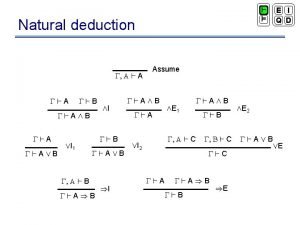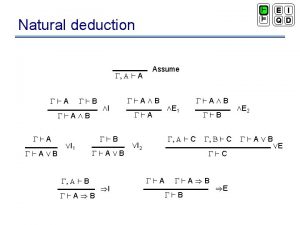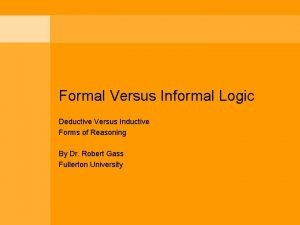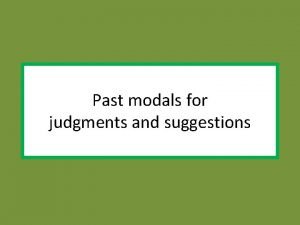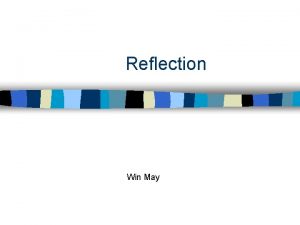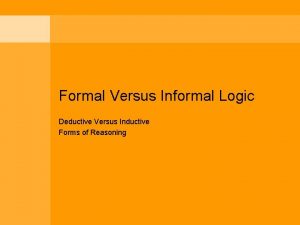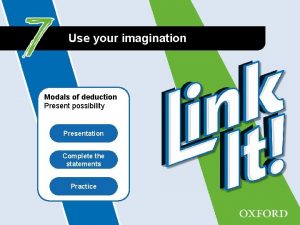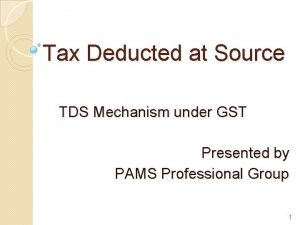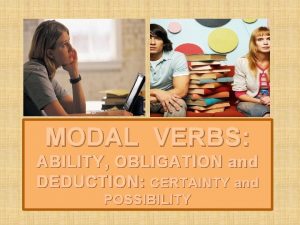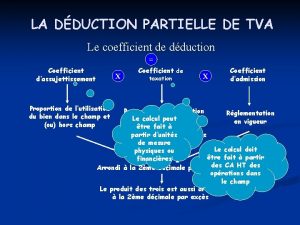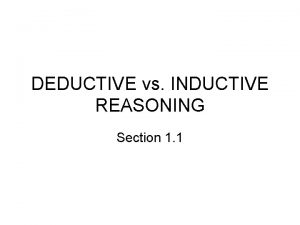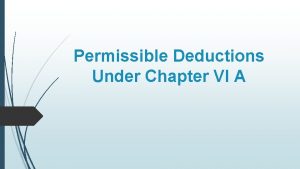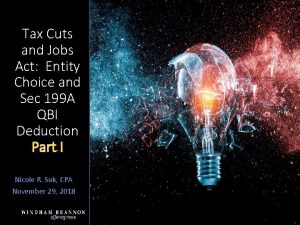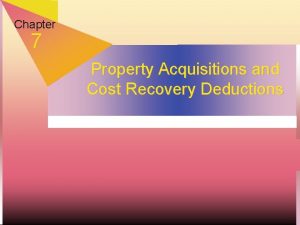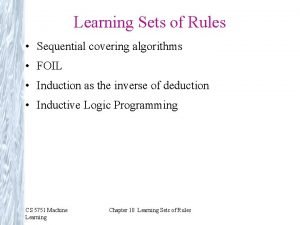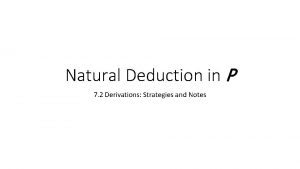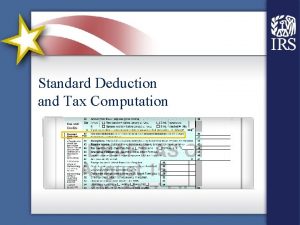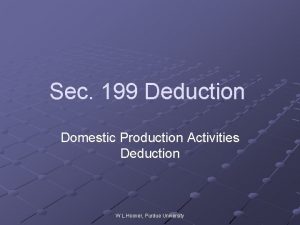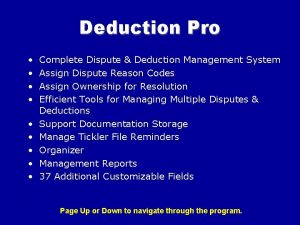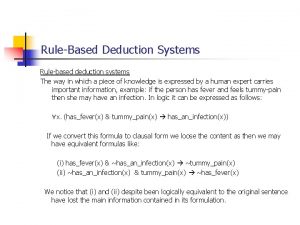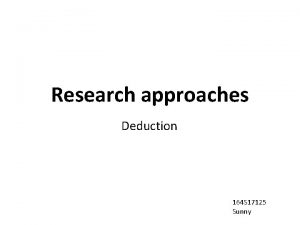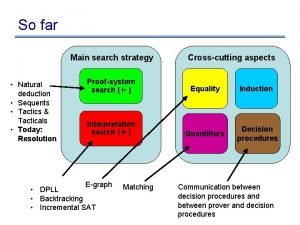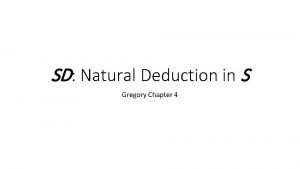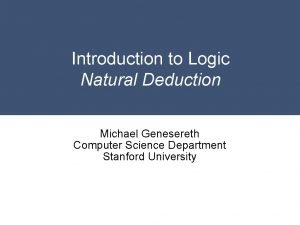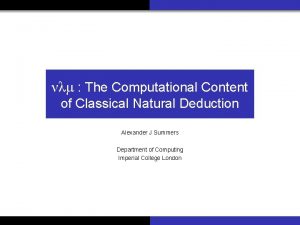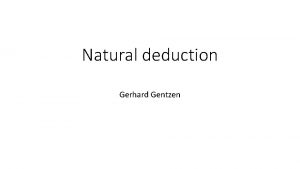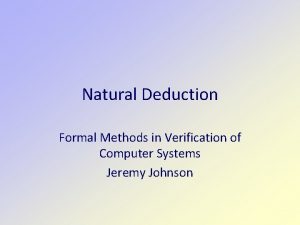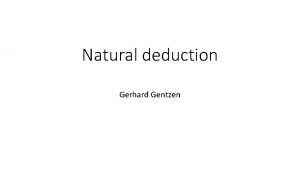Natural Deduction in P 7 2 Derivations Strategies





















- Slides: 21

Natural Deduction in P 7. 2 Derivations: Strategies and Notes

Proofs What to Do—and what NOT to do

The Friendly Rules • ∀E and ∃I are unrestricted and do not use subderivations. • Cautions - ∀E: All instances of quantified variable must be replaced by same constant. E. g. you can’t get Rab from (∀x)Rxx - ∃I: Different constants cannot be replaced with the same variable. E. g. from Gfk you can’t get (∃x)Gxx. Or, on UD: ℕ from 5 > 4 get (∃x)x > x!

P. 253 Example 1 Fe P 2 (∀z)(Fz → Gz) P 3 Fe → Ge 2 ∀E 4 Ge 1, 3 → E 5 Fe ∧ Ge 1, 4 ∧I 6 (∃x)Fx ∧ Gx) 5 ∃I ⊢ (∃x)(Fx ∧ Gx) • We want an existentially quantified conjunction: the ‘Fx’ bit will come from 1. • Get rid of the quantifier in 2 so that we can apply SDE rules. • Now stick on the quantifier and replace constants with variable. DONE!

The Not-So-Friendly Rules • Restrictions for ∀I and ∃E: (i) �� does not occur in an undischarged assumptions (ii) �� does not occur in (∀x)ℙ (for ∀I) or (∃x)ℙ (for ∃E) • Restriction for ∃E: in addition to (i) and (ii) above (iii) �� does not occur in ℚ

P. 252 ∀I Example 1 (∀x)Fx P 2 (∀z)(Fz → Gz) P 3 Fe 1 ∀E 4 Fe → Ge 2 ∀E 5 Ge 3, 4 →E 6 Fe ∧ Ge 3, 5 ∧I 7 (∀x)(Fx ∧ Gx) ⊢ (∀x)(Fx ∧ Gx) 6 ∀I • ∀E is unrestricted so we can straightaway replace (∀x)Fx with Fe and (∀z)(Fz → Gz) with Fe → Ge. Any constant will do. • Since e was arbitrarily chosen—says in 1 that anything we could have chosen is F—we can infer that everything is F.

P. 253 ∃E Example: What Not to Do 1 (∃x)Fx P 2 (∀z)(Fz → Gz) P 3 Fe 1 ∃E 4 Fe → Ge 1, 3 → E 5 Ge 3, 4 → 6 Fe ∧ Ge 3, 5 ∧I 7 (∃x)(Fx ∧ Gx) ⊢ (∃x)(Fx ∧ Gx) MISTAKE! 6 ∃I • You can’t just go from (∃x)Fx—something is F—to this thing e is F • You have to enter a World of What-IF subderivation: ‘something or other is F (says 1)—let’s call whatever it is ‘e’ and see what happens…

P. 253 ∃E Example: What to Do 1 (∃x)Fx P 2 (∀z)(Fz → Gz) P ⊢ (∃x)(Fx ∧ Gx) 3 Fe A 4 Fe → Ge 2 ∃E 5 Ge 3, 4 → E 6 Fe ∧ Ge 3, 5 ∧I 7 (∃x)(Fx ∧ Gx) 8 (∃x)(Fx ∧ Gx) 6 ∃I 1, 3 – 7 ∃E • ∃E rule begins with assumption: ‘Some thing(s) is F. Let’s choose an arbitrary object from those that are F and call it “e”—and see what happens. ’ • We get ‘(∃x)(Fx ∧ Gx)’ from that safe assumption so it really is so!

Choice of Constants • Observe the restrictions on choice of constants for the ∀I and ∃E rules! • Where there are no restrictions, choose constants that will allow you to connect to other sentences in the proof. - E. g. if you have ‘(∀x)(Fx→ Gx)’ and ‘Fa’, and want to get ‘Ga’ then obviously applying ∀E to get ‘Fb → Gb’ is legal but stupid! • Don’t paint yourself into a corner! - Look ahead: if the legal choice of a constant makes it impossible to apply one of restrictive rules later on try using a different constant!

To paint oneself into a corner: to get oneself into a difficulty from which one cannot extricate oneself

P. 255: On Being Painted Into Corner 1 (∀x)(∀y)Cxy P 2 (∀y)Cby 1 ∀E 3 Cbb 2 ∀E 4 (∀y)Cyb 3 ∀I 5 (∃x)(∀y)Cxy 4 ∃I ⊢ (∃x)(∀y)Cyx MISTAKE! • We need to get rid of quantifiers and put in quantifiers, flipping things around. • ‘b’ occurs in ‘(∀y)Cyb’ in line 2 so line 4 is illegal according to ∀I rule restriction (ii) • Rationale for restriction: Cbb (line 3) says that b Cs itself! From that we can’t infer that everything Cs b! (I’m identical to myself—it is not the case that everyone is identical to me!)

P. 255: On Not Being Painted Into Corner 1 (∀x)(∀y)Cxy P 2 (∀y)Cby 1 ∀E 3 Cbc 2 ∀E 4 (∀y)Cyc 3 ∀I 5 (∃x)(∀y)Cxy 4 ∃I ⊢ (∃x)(∀y)Cyx • This time we looked ahead and saw that even though it was legal to get ’Cbb’ in line 3 it would get us into trouble because we had to apply the ∀I rule later on. • We picked ‘c’ as the constant for line 3 instead of ‘b’ so proof went fine!

P. 256: On Being Painted Into Corner 1 (∀y)Bay P 2 Baa 1 ∀E 3 (∃x)Bxa 2 ∃I 4 (∀y)(∃x)Bxy 3 ∀I ⊢ (∀y)(∃x)Bxy MISTAKE! • Same problem as before: ‘a’ appears in ‘(∀y)Bay, so we’ll end up violating restriction (ii) on ∀I later in the proof. • Rationale for restriction: 3 says there’s something that Bs this particular thing a, which we were talking about in 1… • From which we can’t infer 4—which says there’s something that Bs everything.

P. 256: On Not Being. Painted Into Corner 1 (∀y)Bay P 2 Bab 1 ∀E 3 (∃x)Bxb 2 ∃I 4 (∀y)(∃x)Bxy 3 ∀I ⊢ (∀y)(∃x)Bxy • Same fix as before: pick a different constant! • Now 3 just says there’s something that Bs any arbitrarily selected object which, for convenience, we’ve called ‘b’. • Since b is arbitrarily chosen it’s any-old-thing so we can in 4 which here say that there’s something, x, that Bs any-old-thing.

Thu Oct 29 Exercises More proofs! Try them! I’ll work them in the Zoom recording.

Proofs Using ∀E and ∀I

Proofs Using ∀E and ∀I

Proof Using ∃I and ∃I

A Proof That Uses All the Quantifier Rules!

It’s Complicated…Or Not Complicated

 Critères de sgarbossa modifiés
Critères de sgarbossa modifiés Natural deduction cheat sheet
Natural deduction cheat sheet A/b/c rule
A/b/c rule Literal questions
Literal questions Deduction vs induction
Deduction vs induction What is utr in gst
What is utr in gst Ghogle translate
Ghogle translate Past modals for judgements and suggestions
Past modals for judgements and suggestions Polavaram project
Polavaram project Logical reasoning
Logical reasoning Induction vs deduction
Induction vs deduction Modals of deduction present
Modals of deduction present Gst deduction at source
Gst deduction at source What is inference and deduction
What is inference and deduction Certainty examples
Certainty examples Deductive method
Deductive method Régularisation coefficient déduction tva
Régularisation coefficient déduction tva Example of deduction
Example of deduction Permissible deductions
Permissible deductions Qbi deduction example
Qbi deduction example Cost recovery deduction
Cost recovery deduction Sequential covering algorithm in data mining
Sequential covering algorithm in data mining

